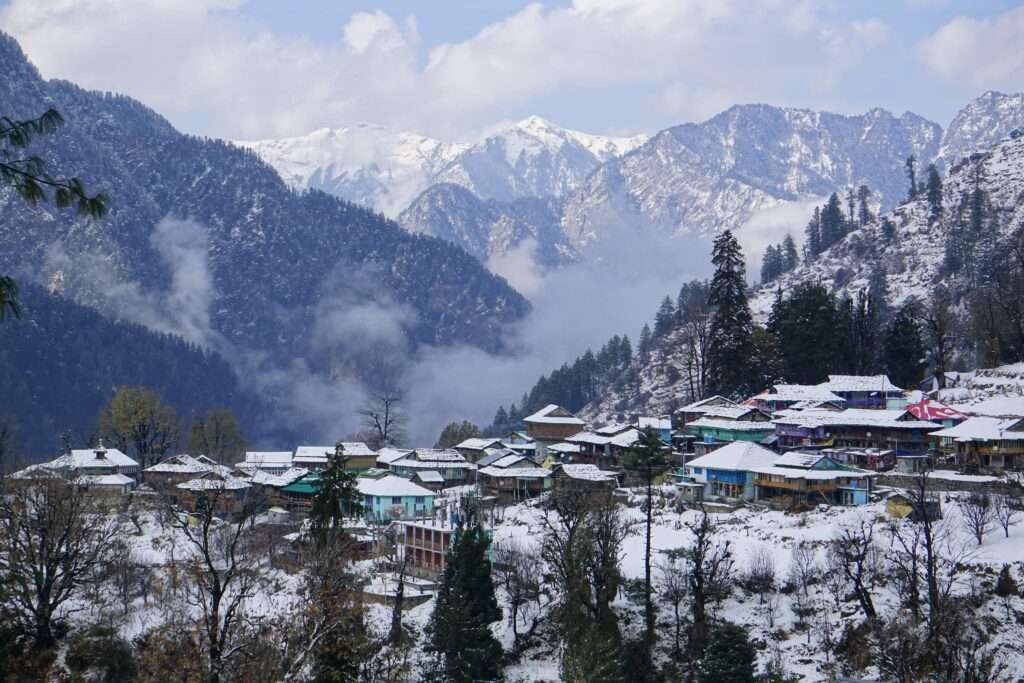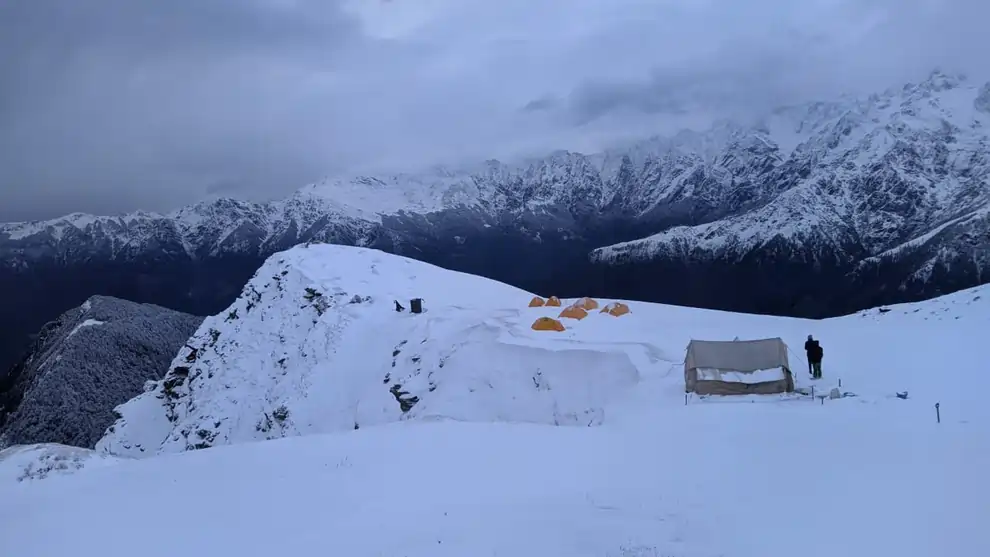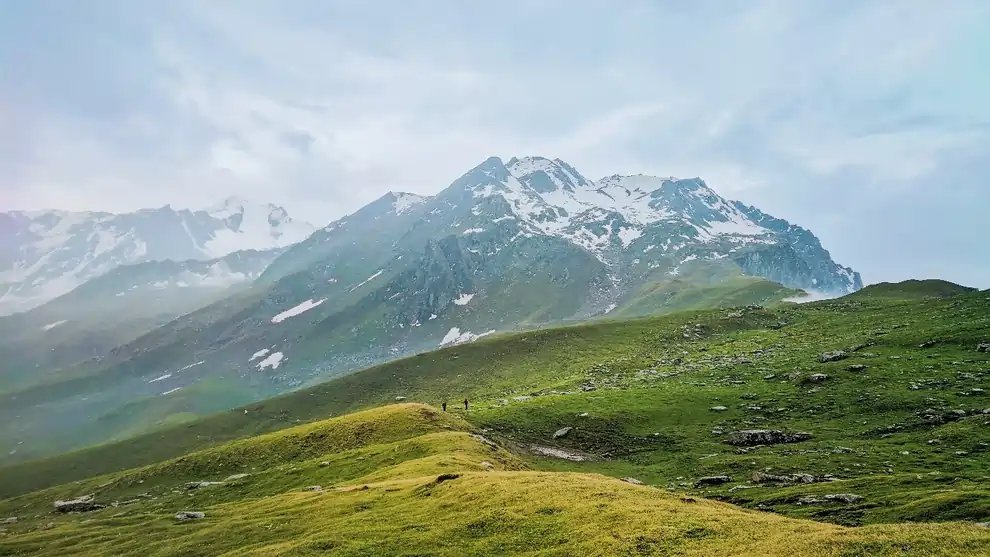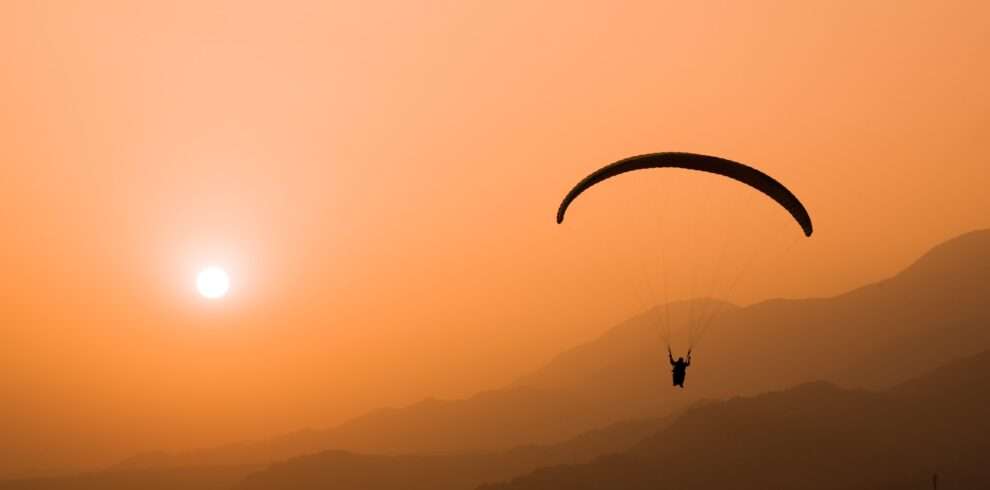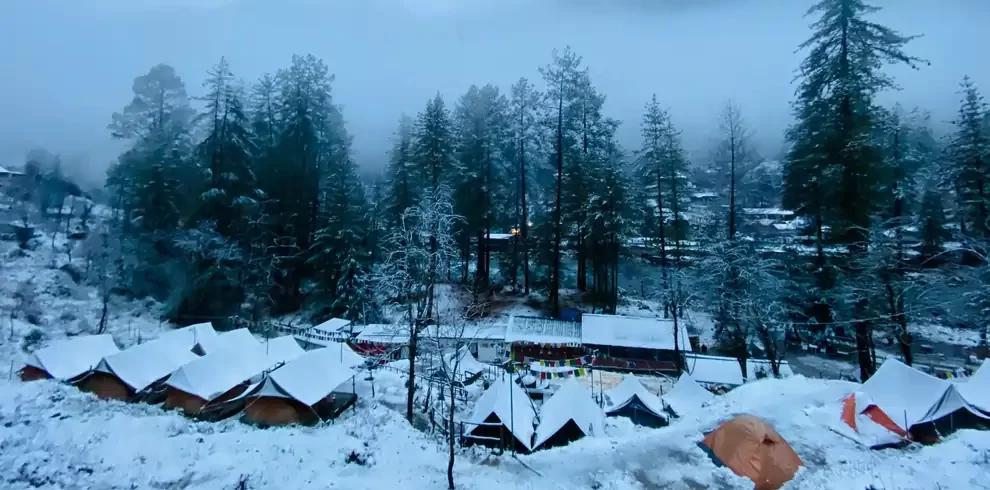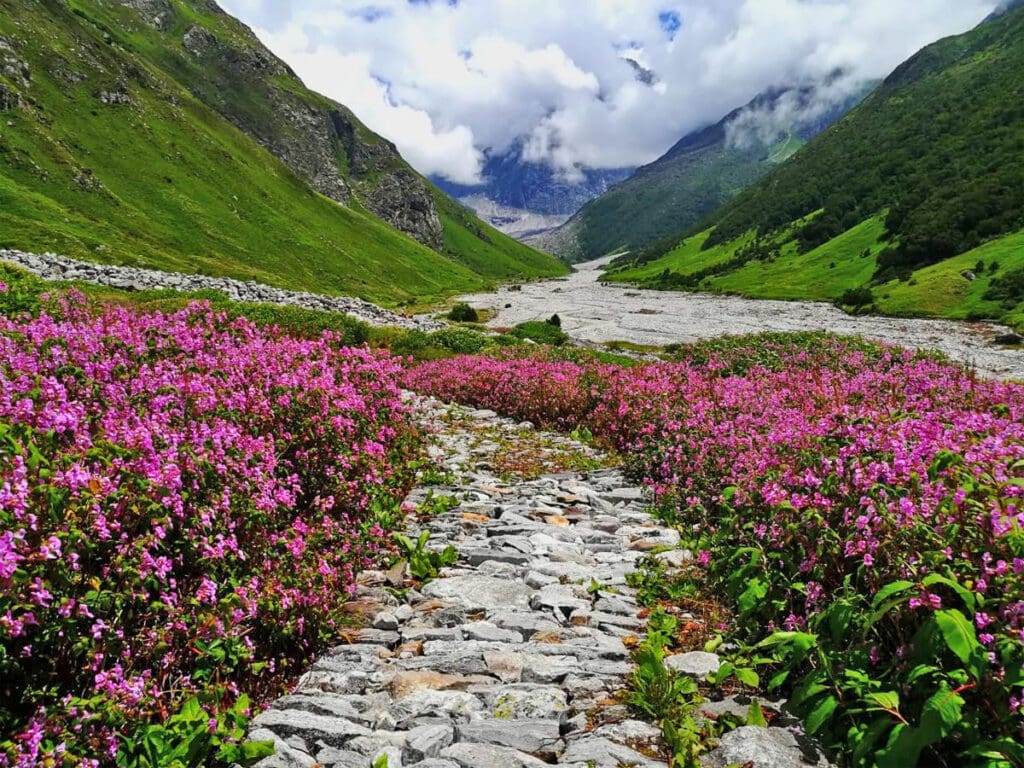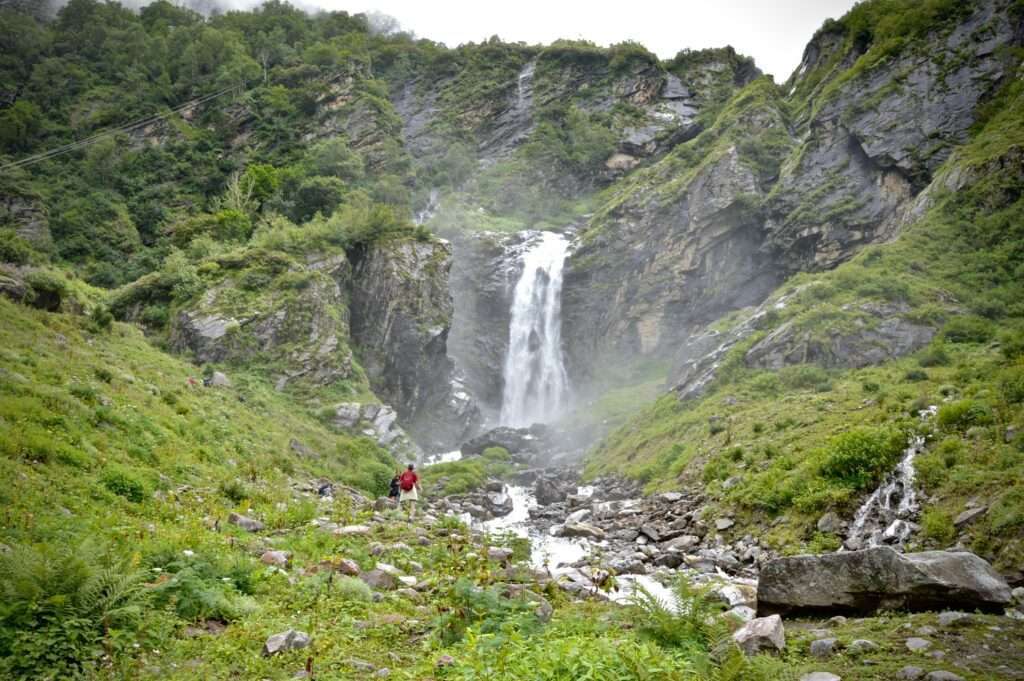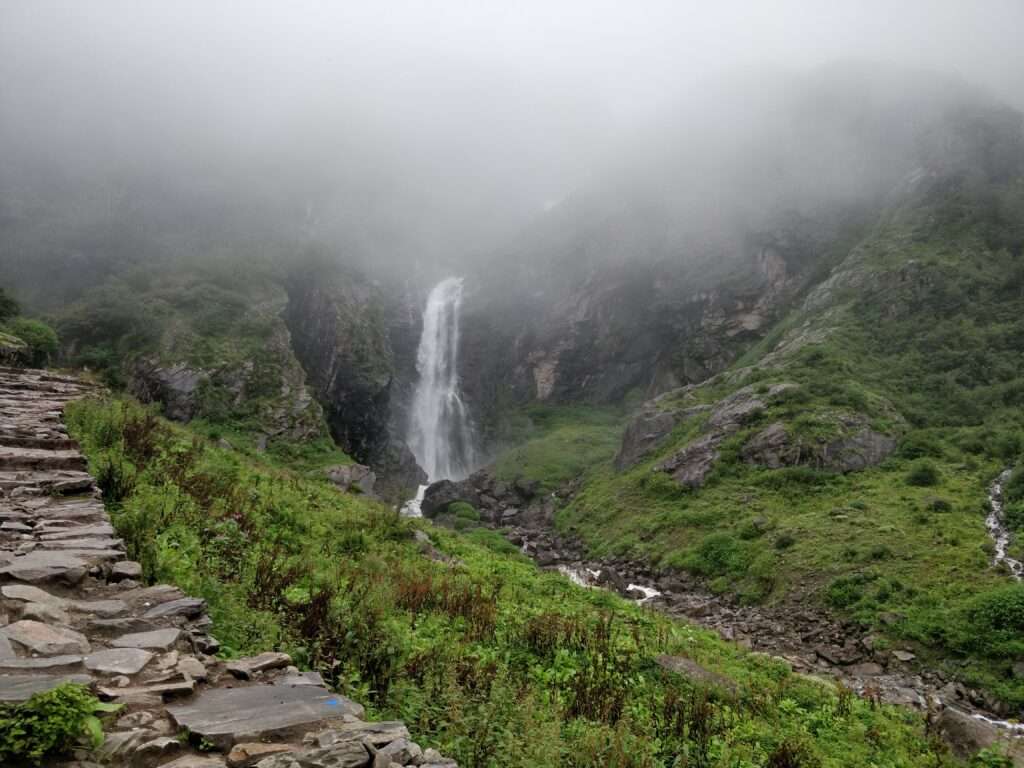Sarpass Trek, Kasol
Sar pass is one of the most fascinating and amazing places in the amazing Parvati Valley.
Trek is highly appreciated and revered for its mesmerizing snow-covered landscape, which makes it a real destination for trekking and exploring.
Sar Pass is the ideal place to live out all your fantasies related to snow and the snow covered mountains.
The place has an eternal touch of nature which gives it an edge over other destinations.
The place is soothing and drenched with a wave of sanguinity, which makes it even more fascinating.
Height and Elevation of the Sar Pass
The SarPass Trek is situated at a notable altitude in the majestic Himalayan region. Here are the details regarding its altitude and elevation:
Approximately 13,800 feet (4,206 meters) above sea level.
The Trek takes you through diverse landscapes, ranging from lower altitudes to the peak. The trek typically starts at an elevation of around 7,000 feet (2,134 meters) and gradually ascends to the highest point at 13,800 feet (4,206 meters).
As you ascend through the varying elevations, you’ll traverse dense forests, serene meadows, and snow-clad stretches. The changing elevation adds to the trek’s appeal, offering different ecosystems and breathtaking views at every altitude.
Given the substantial elevation gain, proper acclimatization is crucial during the Trek. Trekkers often follow a gradual ascent strategy to allow their bodies to adjust to the increasing altitude, minimizing the risk of altitude-related issues.
-
High-Altitude Challenges:
The higher elevations bring cooler temperatures and thinner air, making the trek physically demanding. It’s essential for trekkers to be well-prepared with suitable gear, clothing, and an understanding of altitude-related challenges.
Reaching the summit at 13,800 feet is a gratifying accomplishment. Trekkers are rewarded with breathtaking panoramic views of the surrounding peaks, valleys, and snow-capped landscapes, making the challenging ascent well worth the effort.
The altitude and elevation of the SarPass is not only define its physical demands but also contribute to the overall experience, creating lasting memories for those who undertake this Himalayan adventure.
Trek Location
The super luxurious trek has a moderate distance of about 48 km, making it relatively lengthy.
Even though it feels like a gigantic journey, it’ is not. The trip is full of unparalleled variety and amazing decor.
The trip offers numerous amazing and terrible sights, which makes it an ideal destination for tourism and tours.
Sar Pass Trek Weather & Temperature
Weather
The trek is one of those multi-dimensional destinations that all have their own peculiarities and a wonderful balance that makes them even more appealing.
The rainfall is sufficient to take a tour and explore the landscape. The weather in Sar Pass has its own mood that makes it a seductive and amazing thing.
The rain on Sar Pass trip provides a much better perspective and a great experience that is worth every penny spent and enriching.
Best Time to visit Sar Pass Trek
The Sar trek is best undertaken during specific seasons when the weather is favorable, and the trekking conditions are optimal. The ideal time to do the SarPas trek is during the late spring to early autumn months. Here are the best times to consider:
-
Late April to June:
- Weather: Late April to June marks the spring and early summer season. The weather is pleasant with daytime temperatures ranging from 12°C to 20°C.
- Landscape: The trail during this period is vibrant with blooming flowers and greenery. The meadows come to life, providing picturesque landscapes.
- Accessibility: The trekking paths are generally clear of snow, making it easier to navigate. However, early in the season, some patches of snow may still be encountered at higher altitudes.
-
September to October:
- Weather: Post-monsoon, the weather becomes clear and stable. Daytime temperatures range from 10°C to 15°C.
- Landscape: The landscapes are lush after the monsoon rains, and the skies are generally clear, offering excellent visibility.
- Accessibility: The trails are well-established, and the chances of encountering snow are minimal. The trekking conditions are generally favorable.
Considerations:
-
July and August (Monsoon):
Monsoon brings heavy rainfall, making the trails slippery and increasing the risk of landslides. Trekking during the monsoon is not advisable.
-
November to April (Winter):
Winter months bring snowfall, and the temperatures drop significantly, especially at higher altitudes. The trek becomes challenging and may not be suitable for everyone.
Always check the current weather conditions and the status of the trekking trail before planning your Sar Pass . Additionally, it’s advisable to go with a knowledgeable guide and be well-prepared for varying weather conditions during your trek.
Sar Pass trek distance
The trek is approximately 48 kilometers (29.8 miles) long. This distance includes both ascending and descending sections, covering a variety of terrains, landscapes, and altitudes.
The trek usually takes around 5 to 6 days to complete, depending on the itinerary chosen by trek organizers or individual trekkers.
Here’s a rough breakdown of the distance covered on each day of the Sar Pass trek:
The trek often begins from Kasol, and the first day may involve covering a moderate distance to reach the initial campsite. This distance is usually shorter to allow trekkers to acclimatize.
These days involve trekking through different landscapes, including dense forests, meadows, and steep ascents. Each day covers a varying distance to reach the designated campsites or halts.
The day of crossing Sar Pass itself, which is the highest point of the trek. Trekkers ascend to Pass and then descend to the next campsite, covering a significant distance on this day.
The final day may involve descending to the endpoint of the trek, which could be a village like Barshaini or another designated location.
It’s essential to note that these distances can vary based on the specific trekking route chosen and the itinerary planned by trek organizers. Trekkers should always check with their trek leaders or organizers for the most accurate and updated information regarding the trek distance and itinerary.
How difficult is the Sar Pass trek?
The difficulty level of this prestigious and highly rated trekking destination is in the medium range, which makes it a descent destination,
The journey to Sar Pass has a wonderful altitude that could send goosebumps down the spine of the climber,
but it’ is moderate enough to continue hiking and exploring the fascinating place that is a majestic experience.
The journey to Pass will test you in a way that could make excursionists and alpinists shy away from difficulties. sarpass trip
Is Sar Pass Trek something for newcomers?
The Sar Pass is classified as easy to relatively easy and is known to be a great place to stay.
The Sar Pass trip brings joy and excitement among the pedestrians and excursionists. sar pass trip.
And even for newcomers, this trip is a challenge and a preconceived notion about the touring experience.
For the newbies, the trip is perfect to improve their trekking skills, but they need to be very careful as it is a relatively delicate matter.
Things To Carry For Trek
- Backpack 65/90 L
- Water Bottle
- Energy Bars
- Weather Appropriate Clothing
- Warm Jacket
- Flee Jacket
- Sun protection
- Rain Protection
- Flashlight And Extra Batteries
- Extra Pair of Clothing
- Towel
- Personal Hygiene Kit
- Mini First Aid Kit
- Personal Medication
- Trash Bag
- Moisture Cream
- Tissues
- Slippers
- Gloves
- Sunglass
- Warm Hat
- Insect repellent
- An emergency whistle
Checkout Similar Treks Near Kasol
Trek to Indrahar pass
Unexplored Mcleodganj Triund Trek

